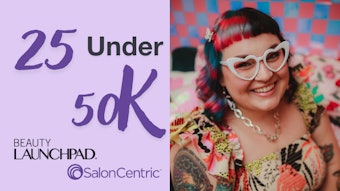
Zoé Bélisle-Springer, global education content lead for Phorest Salon Software, discusses how to manage emotions when dealing with unhappy guests.
With every happy client who leaves your chair comes validation—tangible proof that you are living and breathing your values as a salon business and making an impact on people’s lives. But, you are human. It is very likely that, at some point, someone will share their discontentment with you in person or leave you a less-than-satisfactory review online. Taking the initiative to hear and address your clients’ concerns or complaints can be anxiety-inducing for even the most confident stylist.
Assuming the review isn’t overly antagonistic, unhappy clients offer an opportunity for productive conversations, which is always better than silent resentment. Beauty Lounge owners in Michigan, Lisa Yaldoo and Olivia Shouenyia, consider any feedback a multilayered opportunity: “Clients love to share their experience, and it helps us understand what improvements to make, if any. We never realized how important reviews were, but they connect you so much to the client.”
[1] Fight, Flight, Freeze or Fawn You invest so much of your time and self in your business that it’s only natural for a complaint to feel like a personal attack. Although you may not associate events such as receiving a complaint with your survival instincts, psychologically speaking, even these “everyday” experiences can be perceived as a threat by the brain.
As a hardwired neurological response, you might find yourself in one of four modes:
- Fight—reacting with action, anger or aggressiveness
- Flight—reacting with avoidance or worry
- Freeze—numbing out, shutting down, not being able to articulate how you feel or advocate for yourself
- Faw—immediately acting to please in order to avoid any conflict
The best way to handle difficult client feedback is to first acknowledge and honor your own feelings. For example, you might experience an adrenaline rush or notice tightness in your jaw, tension in your abdomen or a change in your breathing. You might also feel difficult emotions taking over, like guilt, shame, embarrassment, anger or frustration.
This is normal, something we all share as part of being human. How you respond will inform the rest of your interaction, and the simple act of noticing how you feel in the moment can make a difference. If you let feelings of discomfort take over, you allow them to dictate your behavior.
[2] The Choice Point The good news is that you can often turn a disappointed guest into the most passionate advocate for you as a stylist. Learning to navigate these difficult conversations confidently and professionally isn’t easy—but it’s not impossible. What you need is self-compassion and a framework.
Cue “The Choice Point,” a tool that originated from acceptance and commitment therapy. It provides a way to quickly identify the source of any challenging situation, thought or feeling; helps you recognize what you are doing that’s making this situation worse; and plans how to deal with this type of situation effectively.
Start with your values, which are a critical component of your identity. What would you identify as your core three values? Can you define them and how they align with your business? It takes time and effort to gather the tools you need to effectively respond to stressful situations. Just like you wouldn’t wait until there was a fire to buy an extinguisher, you shouldn’t wait for a challenging situation to arise to reflect on your values.
It’s also important to set healthy boundaries. A lot can be said about setting boundaries, but in the context of navigating difficult conversations with clients, don’t let the introspective work of identifying your values leave you feeling like you have to tolerate abusive behavior.
Set boundaries, and be ready to assert them. A communication boundary could be, “Please don’t speak to me in that tone,” while an emotional one could be, “If you are disrespectful, I will no longer be engaging in this conversation.”
[3] Planning Your Reaction In the Choice Point framework, “away moves” represent ways you attempt to suppress, manage and control emotionally challenging experiences.
For example, let’s say your three core values are care, curiosity and kindness. A guest tells you they are extremely disappointed with the results of their service. Maybe they had unrealistic expectations, or perhaps the consultation wasn’t as thorough as it should have been. Either way, you notice feeling confusion, anxiety, hurt, frustration or guilt.
Typical away moves could be avoiding these difficult thoughts and emotions by deflecting, dismissing, pointing fingers or shutting down. Perhaps you drown in worry, guilt, shame or embarrassment. Take a moment to reflect on how you would react if a customer gave you that feedback. To do anything differently, you first need to be aware of your current behaviors.
Here is where “toward moves” come into play. Toward moves align more with the sort of person you want to be and what you would like to do if your protective (or avoidant) ways didn’t immediately interfere.
Expanding on the example above, you would want to be able to show up with more care, curiosity and kindness. In this case, toward moves could include:
- Responding promptly and addressing the client’s concerns
- Taking the issue offline and creating a safe space to engage in conversation
- Asking questions, digging deeper and acknowledging the customer’s feelings
- Remaining calm
- Coming up with a solution to address the client’s discontentment
- Finding a learning opportunity and sharing it with your team
[4] Make It a Habit It’s never a pleasant experience to deal with unhappy customers, but it’s inevitable in any client-facing industry. On a business level, it can be helpful to run through potential guest concerns and role play hypothetical conflicts so you can practice and prepare to respond.
On a personal level, try using breathing exercises or present moment awareness to carve out enough breathing space to notice your thoughts before they dictate your behavior. Explore what values resonate most with the kind of person you want to be and practice working on the Choice Point framework. The more you do, the faster you’ll be able to map it out in your head when faced with discomfort.
All growth is a leap, and gaining the confidence to face difficult situations takes time and practice. Be patient, be kind to yourself and reach out to other salon pros when you need advice or community support.














